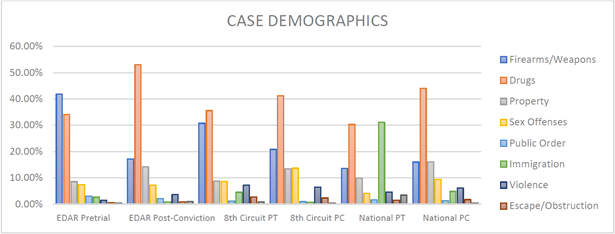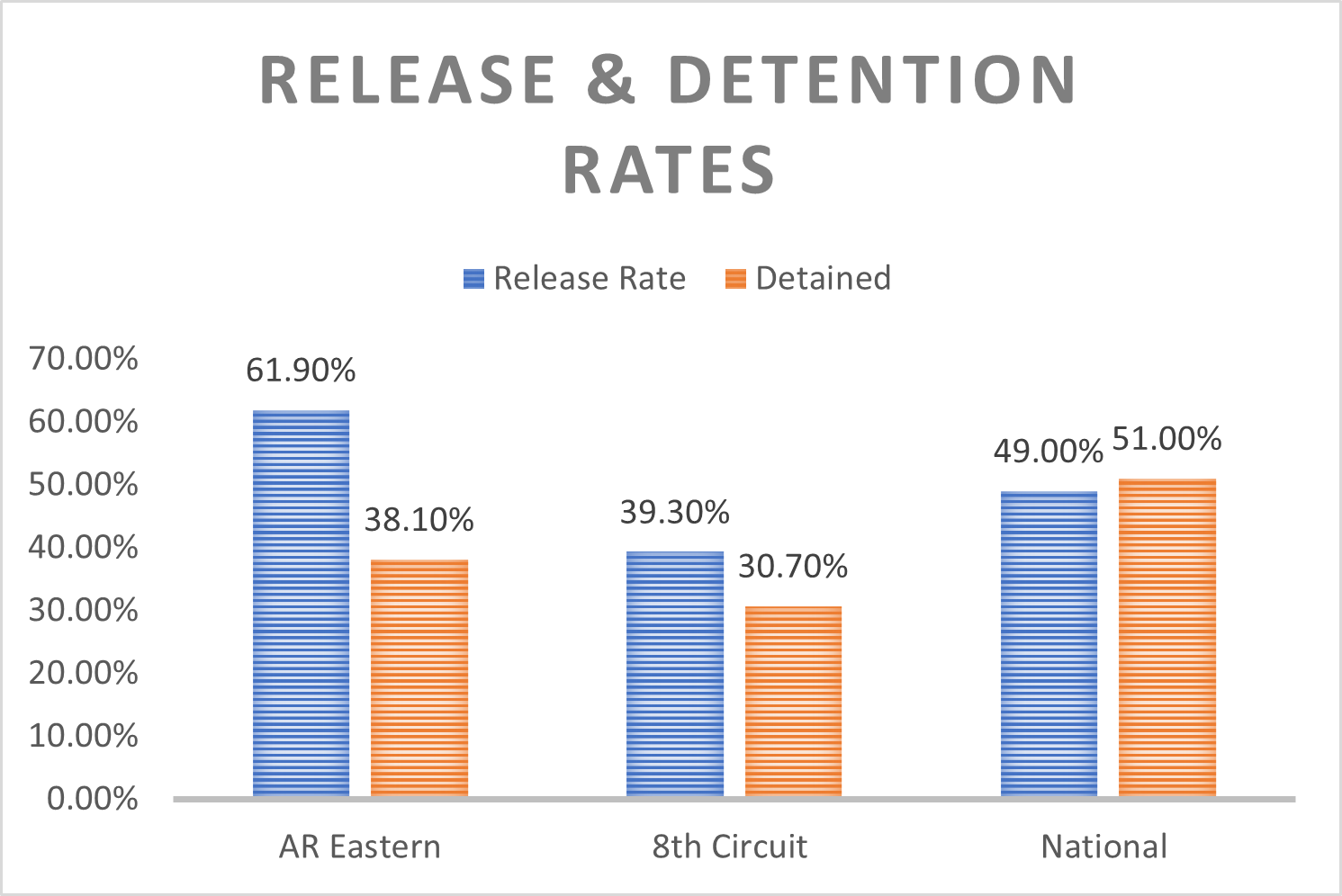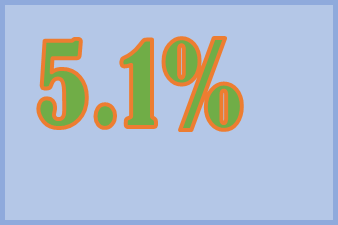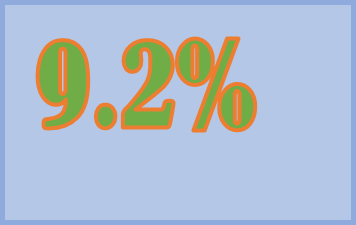The Probation & Pretrial Services Office for the Eastern District of Arkansas (EDAR) is an outcome-based learning organization. But what does that mean exactly? We research and implement strategies with proven outcomes to benefit the court, community, and clients. Further, we track and examine outcomes and resources expended using tools such as the Decision Support System, a database maintained by the Administrative Office of the United States Courts. The probation office selects goals, areas of development, client programs, training, and learning curriculum based on continuous quality improvement in operations and outcomes. The national metrics reports compare pretrial and post-conviction persons under supervision at the local, circuit, and national levels.
EDAR Case Demographics
In 2020, the EDAR’s leading types of cases, for pretrial firearms/weapons cases (42%) and post-conviction drug cases (53%), were significantly higher than the 8th Circuit and national averages.

EDAR Release Rates
In 2020, the release rate for pretrial cases was 61.9%, also significantly higher than the 8th Circuit and national averages. The EDAR's release rate is above the averages for the 8th Circuit and nation for releasing defendants with drugs (73%), escape/obstruction (66.7%), firearms/weapons (49.7%), and other (50%) charges.

EDAR Supervision Outcomes in 2020 (% of supervised persons)
EDAR Pretrial Rearrest Violations

8th Circuit=4.6%
National= 2.5%
EDAR Post-Conviction Unemployment Rate

National= 19.9%
EDAR Post-Conviction Revocation Rate

8th Circuit= 37.3%
National= 25.6%
EDAR Early Termination in Fiscal Year 2020

Cost savings to the judiciary of $163,992.
Statistical Breakdown
What do these statistics tell us about the EDAR? A pretrial release rate of nearly 62% means more clients have an opportunity to obtain or maintain family ties, employment, treatment, and at a huge cost savings to the American citizen. Officers have the responsibility for mitigating risk to increase the safety of the community pending the resolution of the defendant’s charges. This includes using labor intensive measures, such as location monitoring that requires a 24/7 response, for officers who supervise high risk persons under supervision with lengthy criminal histories and treatment needs. These efforts resulted in keeping a pretrial rearrest rate only marginally higher than the Eighth Circuit as a whole while giving more clients the opportunity to utilize resources prior to post-conviction supervision.
On post-conviction supervision, officer’s focused intervention with clients resulted in all but 9.2% of clients being employed in 2020, which is even more remarkable in a global pandemic resulting in record unemployment rates. A revocation rate of 18%, down from nearly 30% in 2016, further illustrates the success of the supervision strategies implemented in the EDAR.
Finally, when warranted, early termination of supervision is a major cost savings to the judiciary that allows resources to be allocated to better serve the mission of the judiciary and incentivizes clients to work hard on their re-entry goals.
The EDAR is an organization that excels rather than exists. This would not be possible without the tireless efforts of our all our probation staff, who ensure the fair administration of justice and heal and protect the community.
